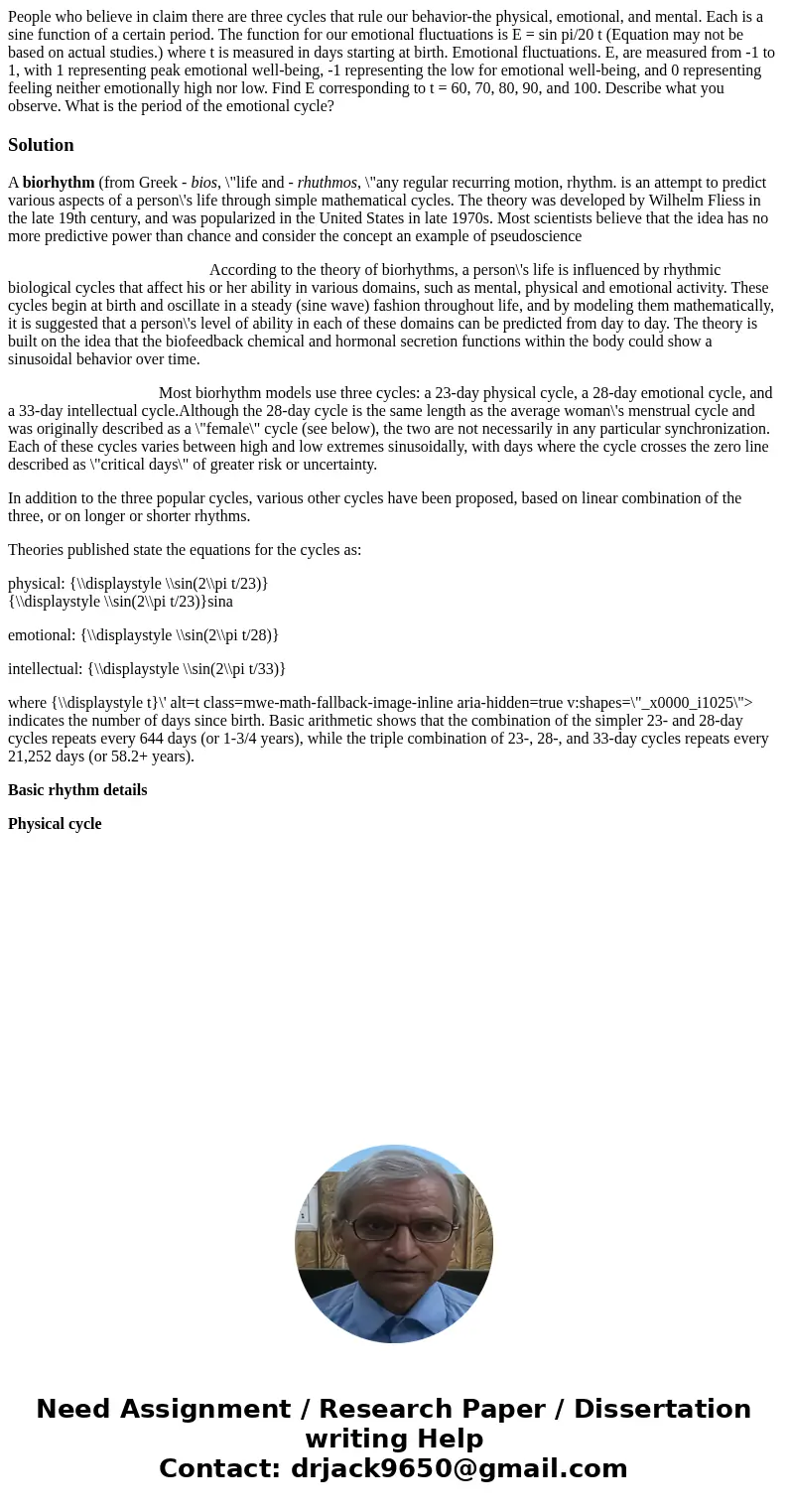People who believe in claim there are three cycles that rule
Solution
A biorhythm (from Greek - bios, \"life and - rhuthmos, \"any regular recurring motion, rhythm. is an attempt to predict various aspects of a person\'s life through simple mathematical cycles. The theory was developed by Wilhelm Fliess in the late 19th century, and was popularized in the United States in late 1970s. Most scientists believe that the idea has no more predictive power than chance and consider the concept an example of pseudoscience
According to the theory of biorhythms, a person\'s life is influenced by rhythmic biological cycles that affect his or her ability in various domains, such as mental, physical and emotional activity. These cycles begin at birth and oscillate in a steady (sine wave) fashion throughout life, and by modeling them mathematically, it is suggested that a person\'s level of ability in each of these domains can be predicted from day to day. The theory is built on the idea that the biofeedback chemical and hormonal secretion functions within the body could show a sinusoidal behavior over time.
Most biorhythm models use three cycles: a 23-day physical cycle, a 28-day emotional cycle, and a 33-day intellectual cycle.Although the 28-day cycle is the same length as the average woman\'s menstrual cycle and was originally described as a \"female\" cycle (see below), the two are not necessarily in any particular synchronization. Each of these cycles varies between high and low extremes sinusoidally, with days where the cycle crosses the zero line described as \"critical days\" of greater risk or uncertainty.
In addition to the three popular cycles, various other cycles have been proposed, based on linear combination of the three, or on longer or shorter rhythms.
Theories published state the equations for the cycles as:
physical: {\\displaystyle \\sin(2\\pi t/23)}
{\\displaystyle \\sin(2\\pi t/23)}sina
emotional: {\\displaystyle \\sin(2\\pi t/28)}
intellectual: {\\displaystyle \\sin(2\\pi t/33)}
where {\\displaystyle t}\' alt=t class=mwe-math-fallback-image-inline aria-hidden=true v:shapes=\"_x0000_i1025\"> indicates the number of days since birth. Basic arithmetic shows that the combination of the simpler 23- and 28-day cycles repeats every 644 days (or 1-3/4 years), while the triple combination of 23-, 28-, and 33-day cycles repeats every 21,252 days (or 58.2+ years).
Basic rhythm details
Physical cycle

 Homework Sourse
Homework Sourse